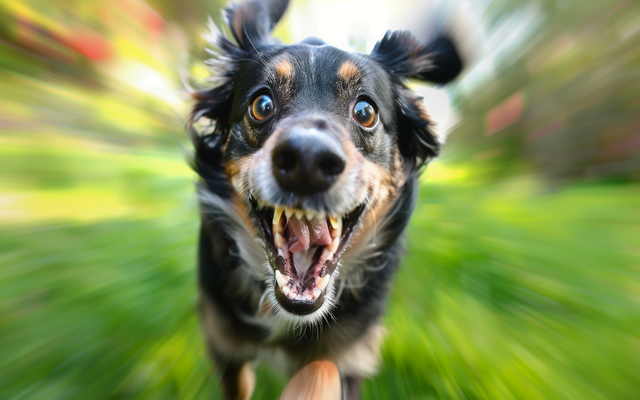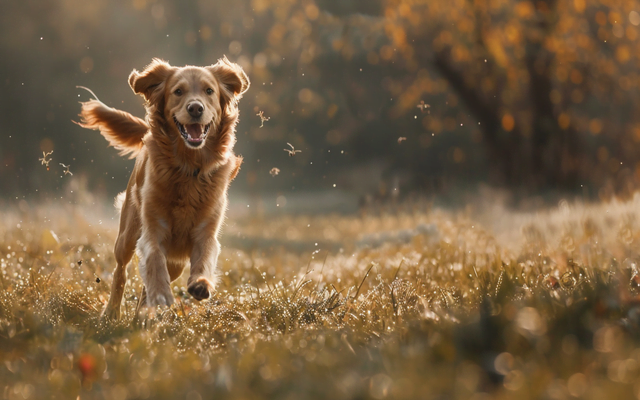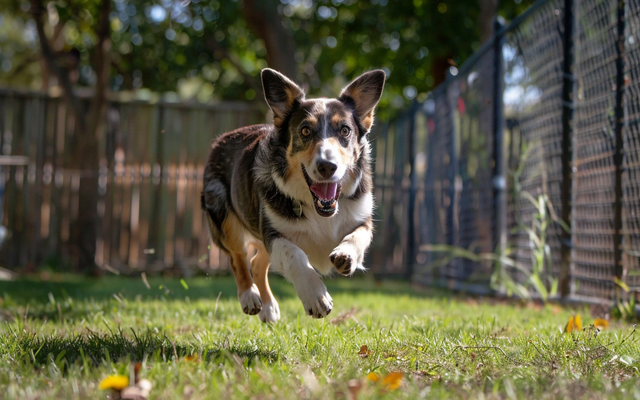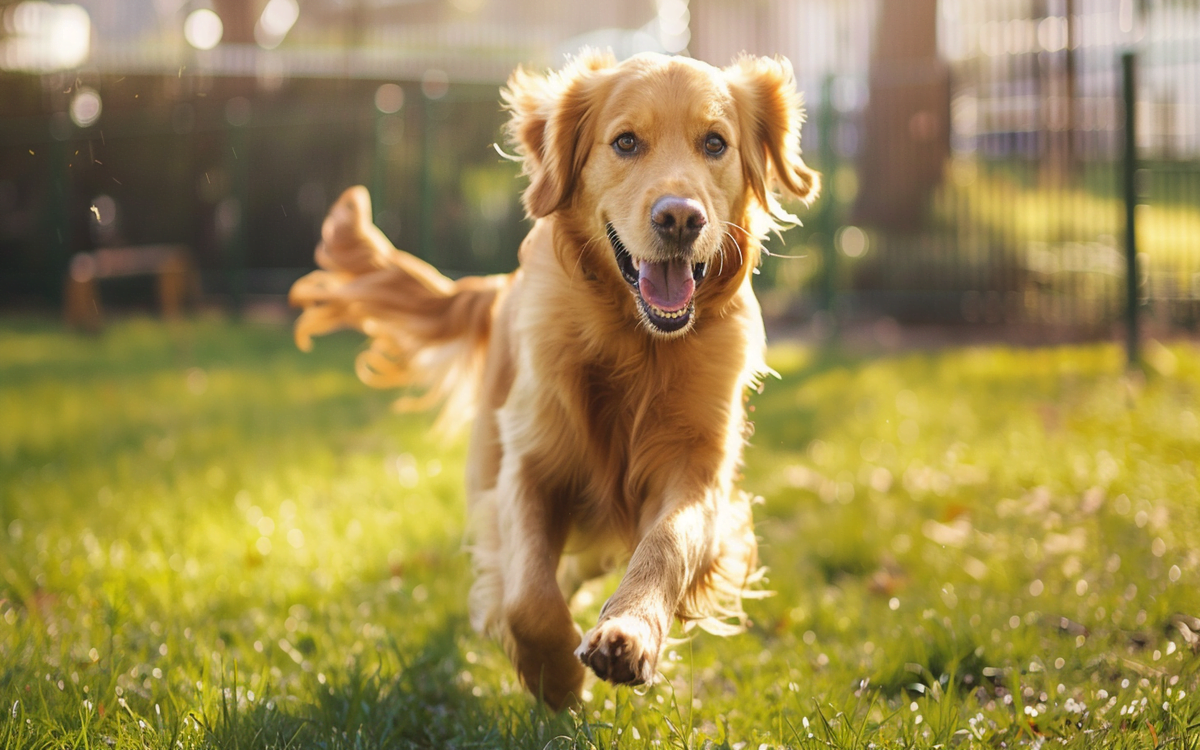You know that feeling when you just have to get up and dance, even if there’s no music? That irresistible urge to move, shake, and let loose? Well, our furry friends experience something similar called the zoomies. Imagine a whirlwind of fur, paws, and pure, unadulterated joy – that’s the essence of a dog experiencing a zoomie.
What are dog zoomies?
Dog zoomies, also known as Frenetic Random Activity Periods (FRAPs) in the scientific world, are sudden bursts of energy that send your pooch into a frenzy of running, jumping, spinning, and general silliness. It’s like a canine caffeine rush, but without the jitters and the need for a bathroom break afterward.
Why do dogs get zoomies?
The million-dollar question, right? While there’s no single answer, several factors can trigger these hilarious episodes:
- Pent-up energy: If your dog’s been cooped up all day, zoomies can be their way of blowing off steam.
- Excitement overload: A beloved human returning home, the word “walk,” or the sight of a squirrel can all ignite the zoomie fuse.
- Post-bath bliss: For some dogs, the feeling of being clean is simply euphoric, and zoomies are their way of celebrating.
- Stress relief: Sometimes, zoomies can be a way for dogs to cope with stress or anxiety.
Are zoomies normal?
Absolutely! Zoomies are a perfectly normal and healthy part of dog behavior. They’re not a sign of anything wrong, and in fact, they can be a great indicator that your pup is happy and well-adjusted.
What are the signs of zoomies?
Zoomies are pretty hard to miss, but here are a few telltale signs:
- Sudden burst of energy: Your dog may suddenly take off running at full speed, seemingly out of nowhere.
- Frantic movements: They might run in circles, spin in place, jump on and off furniture, or even bark or yelp excitedly.
- Wide eyes and a big grin: If your dog could talk during zoomies, they’d probably be yelling, “Whee!”
What are the benefits of zoomies?
Besides being incredibly entertaining for us humans, zoomies offer a few benefits for our furry friends:
- Exercise: Zoomies provide a quick and intense workout, burning off excess energy and helping to keep your dog in shape.
- Stress relief: As mentioned earlier, zoomies can be a healthy way for dogs to cope with stress or anxiety.
- Mental stimulation: The unpredictable nature of zoomies can help to keep your dog’s mind sharp and engaged.
What are the risks of zoomies?
While zoomies are generally harmless, it’s important to be aware of a few potential risks:
- Injuries: If your dog isn’t careful, they could run into furniture, trip over objects, or even fall down stairs during a zoomie episode.
- Property damage: Zoomies can sometimes result in broken vases, overturned lamps, or other household mishaps.
- Behavioral problems: In rare cases, zoomies can be a sign of underlying behavioral problems, such as anxiety or aggression.

Causes of Dog Zoomies
So, what exactly sparks these spontaneous bursts of canine craziness? Let’s dive into the most common culprits behind those hilarious zoomie episodes:
Pent-up Energy
Imagine being a bundle of energy with nowhere to go. That’s the reality for many dogs who don’t get enough exercise. Zoomies can be their way of releasing all that pent-up energy, like a pressure cooker letting off steam. If your dog’s been cooped up inside all day, a sudden burst of zoomies might be their way of saying, “Let me run!”
Excitement Overload
Dogs are emotional creatures, and sometimes their excitement levels reach a boiling point. This can happen when you come home from work, when guests arrive, or even when your dog sees their favorite toy. The excitement can be so overwhelming that it triggers a zoomie frenzy. Think of it as your dog’s version of a happy dance.
Relief
Ever feel like you could run a marathon after a long day at work? Dogs experience a similar sense of relief after being confined or restrained. Whether it’s after a bath, a vet visit, or a car ride, zoomies can be a way for your dog to express their newfound freedom.

Stress
While zoomies are often a joyous expression, they can also be triggered by stress or anxiety. If your dog is feeling overwhelmed or scared, a sudden burst of energy might be their way of coping. It’s important to pay attention to your dog’s body language and the context of their zoomies to determine if stress might be a factor. A common sign of stress in dogs is “whale eye,” where the whites of their eyes become more visible. If you notice your dog exhibiting whale eye or other signs of anxiety, you can learn more about it in our article “Dog Whale Eyes: Decoding Your Pup’s Anxious Glances.”
Medical Conditions
In some cases, zoomies can be a symptom of an underlying medical condition. For example, dogs with epilepsy or cognitive dysfunction may experience zoomies as part of their seizures or confusion. If your dog’s zoomies are frequent, prolonged, or accompanied by other unusual behaviors, it’s important to consult your veterinarian or visit the website “American Veterinary Medical Association (AVMA)” for more information to rule out any medical causes.
Age
Puppies and young dogs are notorious for their zoomies. They’re full of energy and still learning to control their impulses, so zoomies are a natural outlet for their exuberance. However, zoomies aren’t just for the young ones. Even older dogs can get the zoomies, although they may be less frequent and less intense.
Breed
Some breeds are simply more prone to zoomies than others. High-energy breeds like Border Collies, Australian Shepherds, and Jack Russell Terriers are known for their love of running and playing, so it’s no surprise that they’re also prone to zoomies. However, any dog, regardless of breed, can experience this delightful phenomenon.
A table listing common dog breeds prone to zoomies, their energy levels, and possible reasons for their zoomies
| Breed | Energy Level |
Possible Zoomie Triggers
|
| Border Collie | High |
Pent-up energy, excitement, herding instinct
|
| Australian Shepherd | High |
Pent-up energy, excitement, herding instinct
|
| Jack Russell Terrier | High |
Pent-up energy, excitement, prey drive
|
| Labrador Retriever | Medium-High |
Excitement, playfulness, retrieving instinct
|
| Beagle | Medium-High |
Excitement, scent-tracking instinct
|
Understanding the various causes of zoomies can help you better understand your dog’s behavior and provide them with the care and attention they need.
How to Prevent Dog Zoomies
While we all love a good zoomie session (especially when it’s captured on video for posterity), there are times when those bursts of energy might not be ideal. Whether you’re in a crowded place, your dog is prone to getting overly excited, or you simply want to channel that energy elsewhere, here are some proactive steps you can take to prevent those wild zoomie episodes:
Provide Plenty of Exercise
Think of exercise as a pressure valve for your dog’s energy. Regular physical activity helps to burn off excess steam, reducing the likelihood of spontaneous zoomies. Aim for at least 30 minutes of moderate-intensity exercise each day. This could include walks, runs, fetch sessions, or even swimming.
- Tailor exercise to your dog’s breed and age: High-energy breeds like Border Collies may need more exercise than lower-energy breeds like Bulldogs. Similarly, puppies will have different exercise needs than senior dogs.
- Mix it up: Variety is the spice of life, even for dogs! Keep your dog engaged by trying different types of exercise, like hiking, agility training, or dog sports.
Give Your Dog Mental Stimulation
A tired dog is a happy dog, but a mentally stimulated dog is an even happier one! Mental exercise is just as important as physical exercise for preventing zoomies. Engage your dog’s brain with puzzle toys, training sessions, or scent work activities.
- Puzzle toys: These interactive toys challenge your dog to figure out how to get treats or food, providing both mental stimulation and a rewarding experience.
- Training: Teaching your dog new tricks or commands not only strengthens your bond but also keeps their mind active.
- Scent work: Dogs have an incredible sense of smell, and scent work activities like nose work or tracking can be a fun and stimulating way to tire them out.

Keep Your Dog on a Regular Schedule
Dogs thrive on routine. A consistent schedule for meals, walks, playtime, and bathroom breaks can help regulate their energy levels and reduce the likelihood of spontaneous zoomies. Try to stick to the same schedule each day, even on weekends.
Avoid Exciting Your Dog Too Much
While it’s tempting to get your dog riled up with high-pitched squeals and roughhousing, this can sometimes backfire and trigger a zoomie episode. Instead, opt for calm and controlled interactions, especially before bedtime or when you’re in a situation where zoomies wouldn’t be appropriate.
Provide Your Dog with a Safe Space to Run Around
If your dog does get the zoomies, it’s important to have a safe space for them to let loose. This could be a fenced-in yard, a dog park, or even a large room in your house with breakable items removed.
By following these tips, you can help your furry friend channel their energy in a positive way and minimize those unexpected zoomie bursts.
How to Manage Dog Zoomies
So, the zoomies have struck! Your dog is off, bouncing off the walls like a furry pinball. Now what? Here’s how to handle those high-speed hijinks:
Stay Calm and Don’t Try to Stop Your Dog
First and foremost, don’t panic. Trying to grab or restrain your dog during a zoomie episode is like trying to catch a greased pig – it’s futile and could even lead to injury. Remember, zoomies are a natural expression of energy and joy. Embrace the chaos, and let your dog have their fun.
Provide a Safe Space to Zoom
Safety first! If your dog is zooming around indoors, clear a path and remove any obstacles that could cause them to trip or hurt themselves. If possible, move fragile items out of harm’s way. Ideally, try to redirect them to a safe outdoor space like a fenced-in yard or a dog park where they can really let loose.

Distract Your Dog
While it’s best not to interrupt the zoomies entirely, you can try to gently redirect your dog’s energy. Try calling their name or squeaking a favorite toy to see if you can lure them away from any potential hazards. Sometimes, offering a treat or a quick game of tug-of-war can help to break the zoomie spell.
Wait It Out
In most cases, zoomies are short-lived, lasting only a few minutes. Once your dog has burned off some energy, they’ll likely calm down on their own. Take a deep breath, grab your camera, and enjoy the show!
Training for Zoomie Control
While you can’t completely prevent zoomies, you can teach your dog to respond to cues during their energetic outbursts. Training your dog to “come” or “settle” can be helpful for redirecting them when zoomies strike at inopportune times.
- Start by practicing these commands in calm situations with plenty of positive reinforcement.
- Gradually increase the level of distraction as your dog masters the commands.
- Once your dog reliably responds to the cues, try using them during a zoomie episode to see if you can regain some control.
Remember, patience is key when dealing with zoomies. It’s a natural part of your dog’s behavior, and with a little understanding and management, you can both enjoy those hilarious moments of pure canine joy.
Conclusion
Zoomies in dogs are not only a normal behavior but also an integral part of the lives of our four-legged friends. They are a way to express a dog’s joy, excitement, and abundant energy. Although it can seem a bit chaotic at times, zoomies offer many benefits for your dog’s physical and mental health.
By understanding the causes and how to control zoomies, you can ensure that your dogs can enjoy these fun moments in a safe and healthy way. Remember, zoomies are a natural part of dog behavior, and with a little understanding and management, both you and your dog can enjoy these fun moments.
If you are concerned about the frequency or intensity of your dog’s zoomies, don’t hesitate to seek advice and support from your veterinarian.
FAQs
Are dog zoomies a sign of happiness?
Yes, zoomies often indicate excitement or joy, but they can also stem from stress or anxiety. Observing your dog’s overall demeanor and the context of the zoomies can help determine the underlying emotion. A happy zoomie usually involves a relaxed body posture, playful vocalizations, and an eagerness to engage with you or other dogs.
Can zoomies be harmful to my dog?
Generally, zoomies are harmless fun and a healthy way for dogs to release pent-up energy. However, it’s crucial to ensure a safe environment for your dog to zoom around in, free from obstacles or hazards. If your dog is prone to zoomies in the house, remove any fragile items and consider providing them with a designated “zoomie zone” with soft surfaces to minimize the risk of injury.
Do certain dog breeds zoomie more than others?
Yes, high-energy breeds like Border Collies, Australian Shepherds, and Jack Russell Terriers are more prone to zoomies due to their active nature and herding instincts. However, any dog can experience zoomies regardless of breed, age, or size. Even the calmest couch potato might surprise you with a spontaneous zoomie session!
Why do puppies have more zoomies than adult dogs?
Puppies possess boundless energy and are still developing their impulse control, making zoomies a common outlet for their exuberance. As dogs mature, their zoomies might become less frequent or intense as they learn to regulate their energy levels more effectively. However, many adult dogs still enjoy the occasional zoomie burst throughout their lives.
What’s the difference between zoomies and a seizure?
Zoomies are voluntary and playful behaviors characterized by frenetic running, jumping, and spinning. Dogs in the midst of zoomies are typically responsive to their environment and can be easily distracted. In contrast, seizures are involuntary and involve a loss of consciousness and muscle control. If you’re unsure whether your dog is experiencing zoomies or a seizure, it’s crucial to consult your veterinarian for a proper diagnosis.

My job is to make sure every fact is right and every article is a joy to read. I’m kind of like a dog trainer for information – I make it behave!

